Currently, Maine has but one rail passenger service: the Downeaster, which makes five daily roundtrips between Boston and Brunswick. Inaugurated Dec. 15, 2001, initially running only as far north as Portland, the Amtrak-operated service carried 540,000 riders in fiscal year 2018.
Beyond the Downeaster’s route, Mainers must rely on driving or a regional bus network. “I think the time has come to look at alternative mass transit to help get people around,” says Patricia Quinn, executive director of the Northern New England Passenger Rail Authority.
The agency was formed in 1995 and is chartered to develop and manage passenger rail to and within the state of Maine. Funding comes from fare revenue, federal sources and the Maine Department of Transportation.
The Portland metropolitan area, home to 535,000, has grown 4.1% since 2010. Driven by tourism, financial services, education and health care, the region accounts for more than half the state’s economy. Its unemployment rate of 2.3% is among the lowest in the nation.
For several years, local rail advocates have been pining for train service to Lewiston-Auburn, two adjacent cities about 35 miles north of Portland. The agency released a passenger rail service plan in May, building on a study of travel patterns issued last year. The service plan identifies three potential routes, with projected costs to start and operate this potential new service.
Diesel multiple-unit equipment would service Lewiston-Auburn, connecting with the Downeaster either at Portland or Yarmouth. The latter option would require a new station and an added stop for the Downeaster, and is considered primarily a cost-saving step toward an eventual Portland connection.
One option is to use Pan Am Railways’ freight mainline to Lewiston, which currently carries six to eight freight trains a day. NNEPRA envisions double-tracking the line to handle up to 30 daily passenger trains.
Existing Class 2 trackage would need to be upgraded to Class 4 to allow 80 mph passenger operations and installation of positive train control would be required.
The state of Maine also owns 178 miles of inactive railroad rights-of-way, including trackage that parallels Pam Am for part of the route to Auburn, across the Androscoggin River from Lewiston. Although it hasn’t seen service since 2015 and was only maintained to Class 1 standards, that’s another option.
A third alternative would enter Portland by way of a now-abandoned right-of-way, requiring replacement of a burned-out, over-water wooden bridge and trestle. It would then follow the right-of-way currently used by the Maine Narrow Gauge Railroad and terminate at the city’s cruise ship terminal. The only possible connection to the Downeaster would be at Yarmouth.
However, that route would impede on a popular park and walking trail in Portland that is a designated historic landscape district. That would likely lengthen the permitting process and arouse the ire of park users and local residents.
Capital costs range from $189-295 million to ready either of those alignments for high-frequency passenger service through to Portland, or $143-184 million to terminate at Yarmouth.
Whichever route is chosen, Quinn cautions, “Starting up a train and have it go back and forth between two arbitrary locations doesn’t necessarily mean that this is going to be an economic success.” Additional study is needed, she believes, to identify specific regional and social benefits.
But the primary issue that concerns Quinn is where the Downeaster or any future train service arrives in Portland.
Currently, that’s at the Portland Transportation Center, which is more than 20 years old. The combined rail-bus station is owned by Concord Coach Lines, with NNEPRA as a tenant. Situated on Thompson’s Point, it places passengers 10-15 minutes by car or city bus from downtown Portland.
Downeaster trains reach it by diverting off the Pan Am mainline onto the railroad’s Mountain Branch. To continue either to Brunswick or Boston, trains must make a reverse move to get back to the mainline. Quinn says that adds 15 minutes to overall trip time.
The agency considered putting in a wye, but the state and developers have other ideas for the land that would be needed. And moreover, the property is limited to a single rail platform and is maxed out for car parking and bus docks.
Ideally, the agency would want to see a new multimodal transit center along the main line so that a 15-minute delay could be reduced to a two-minute station stop. Quinn adds, “We want a double platform so that trains could meet in that location going northbound and southbound.”
Wayne Davis, chairman of Train Riders Northeast, agrees that it needs to be on the main line. He sees one option adjacent to a large hospital complex and another by Congress Street, just minutes from downtown.
The Maine Department of Transportation is studying possible sites. Their report is due to be released in September.
“The question of the Portland Transportation Center needs to be answered because if the station doesn’t move, and there is or isn’t a wye, that’s going to weigh heavily into what kind of service can even be supported into Lewiston-Auburn,” Quinn tells Trains News Wire.
She sees the Lewiston-Auburn operation as “more of a commuter-type connectivity” that would feed into the Downeaster for longer journeys. And it’s just a harbinger of how NNEPRA could evolve, taking a greater role in regional rail transit.
“I know we’ve only been looked at as the Downeaster because that’s all we had,” Quinn says, adding, “I think the potential could be there to build off the core service.”
The Authority has toyed with extending Downeaster service further up the coast to Rockland, a popular tourist destination along a scenic rail line owned by the state. Last served by the Maine Eastern Railroad, which ran seasonal weekend trains, it’s been freight-only since 2016.
“The thought process there is using our third set of equipment and just extending up to Rockland,” Quinn explains. It would be a Friday-through-Sunday, summertime service. She hopes it will be possible next year.
South of Portland, the agency is looking to extend a 2-mile passing siding at Wells to 8 miles, enabling running meets of freight and passenger trains. Along with that will be a second platform at the Wells station, which allows another possible service.
“We’re looking at the potential of using that third set of equipment on weekdays, running a train from Brunswick in the morning down to Wells and then doing an inbound commute into Portland and Freeport and Brunswick,” Quinn says.
“On the Downeaster, 86% of the people who ride it are traveling to or from Boston, but we do have latent capacity in between,” she explains.
And as the Portland region grows, the agency may provide more commuter-like services.
Quinn says she’s spoken to the Falmouth town council, where a shopping center with plentiful parking sits alongside the Downeaster’s route. “It’s about 11 minutes from there to that spot in Portland where we would maybe look for a station,” she says. “Would a commuter platform there make sense?”
On the other side of Portland, in Westbrook, a large, new mixed-use development is going in on a parcel of land bisected by the Mountain Branch. The developer asked NNEPRA to study the feasibility of establishing transit along the line.
“We call it the Westbrook-Portland shuttle, which would be a new service,” says Quinn. Using high-frequency, short-set DMU service, demand could reach 1,800 riders a day. It would both connect to the Downeaster and reach downtown Portland at an existing city-owned parking lot, adding to a growing network of future transit services.
Strong support for more rail transit in this booming area comes from labor, the Sierra Club, the Greater Portland Council of Governments, the Maine Rail Transit Coalition, commercial developers and Portland Mayor Ethan Strimling.
Countering national trends, the Portland region saw transit ridership increase 13.6% from 2013 to 2017.
The 2018 election gave Democrats control of the Maine state legislature and governor’s office, improving receptivity to rail transit. Quinn describes the new Commissioner of Transportation, Brian Van Note, as “extremely supportive and engaged.”
Portland is busily adding new hotels, office space, condominiums, and a new marina that accommodates super-yachts. Rail supporters feel the time has come to add more trains.
“We’re pretty excited about some of these ideas and visions,” Quinn says. “We’re trying to capitalize on the success of the Downeaster and make that as successful as we can, and look at other opportunities where the application of passenger rail cannot only support the Downeaster service but help grow the economy.”





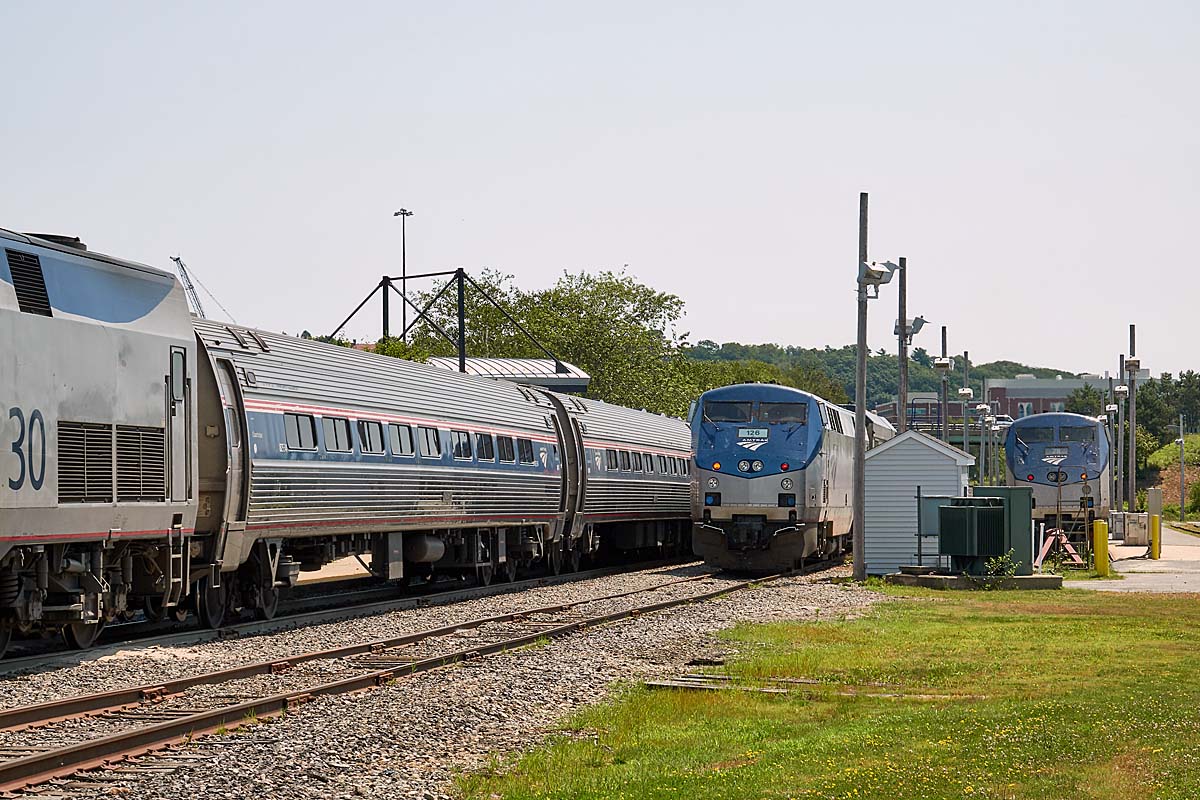
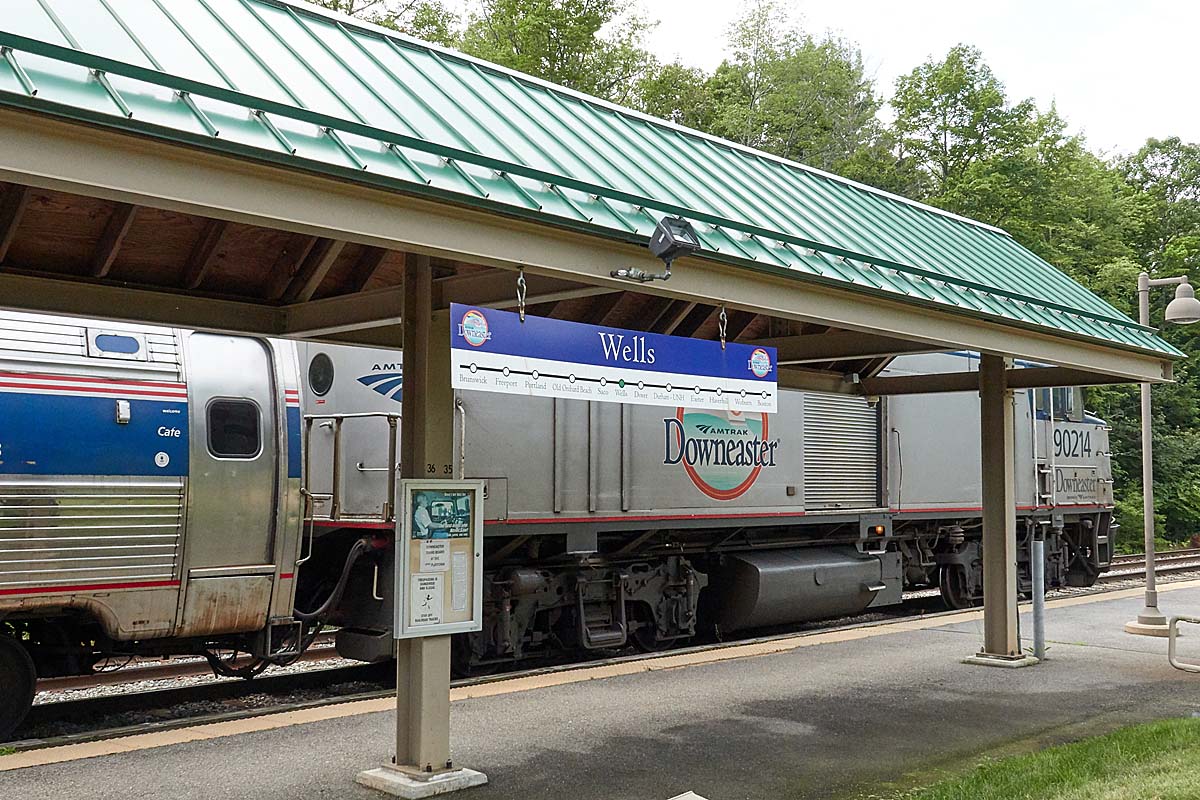

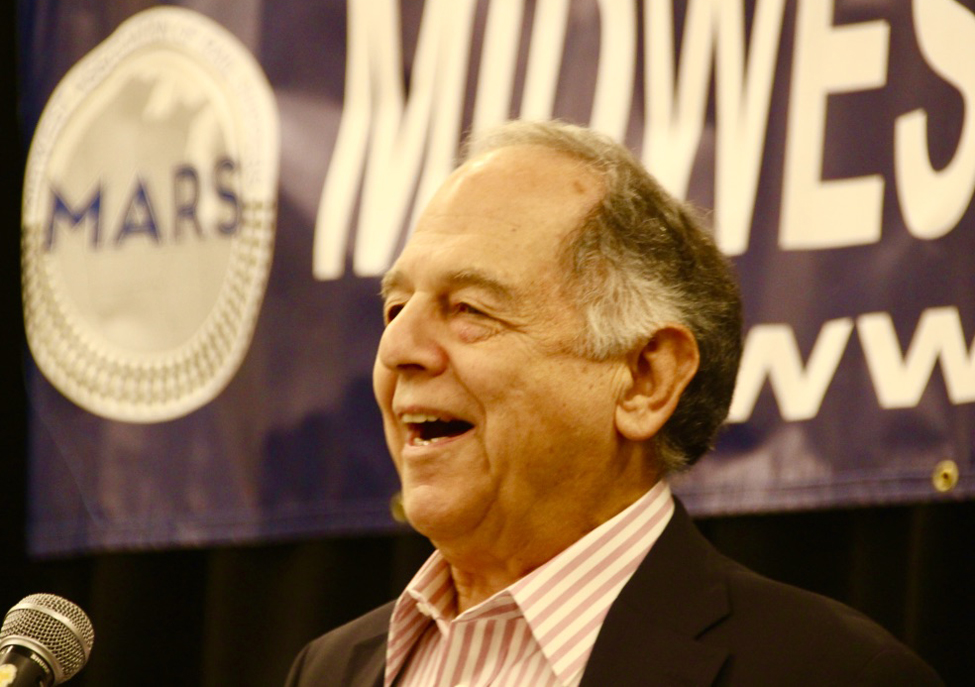
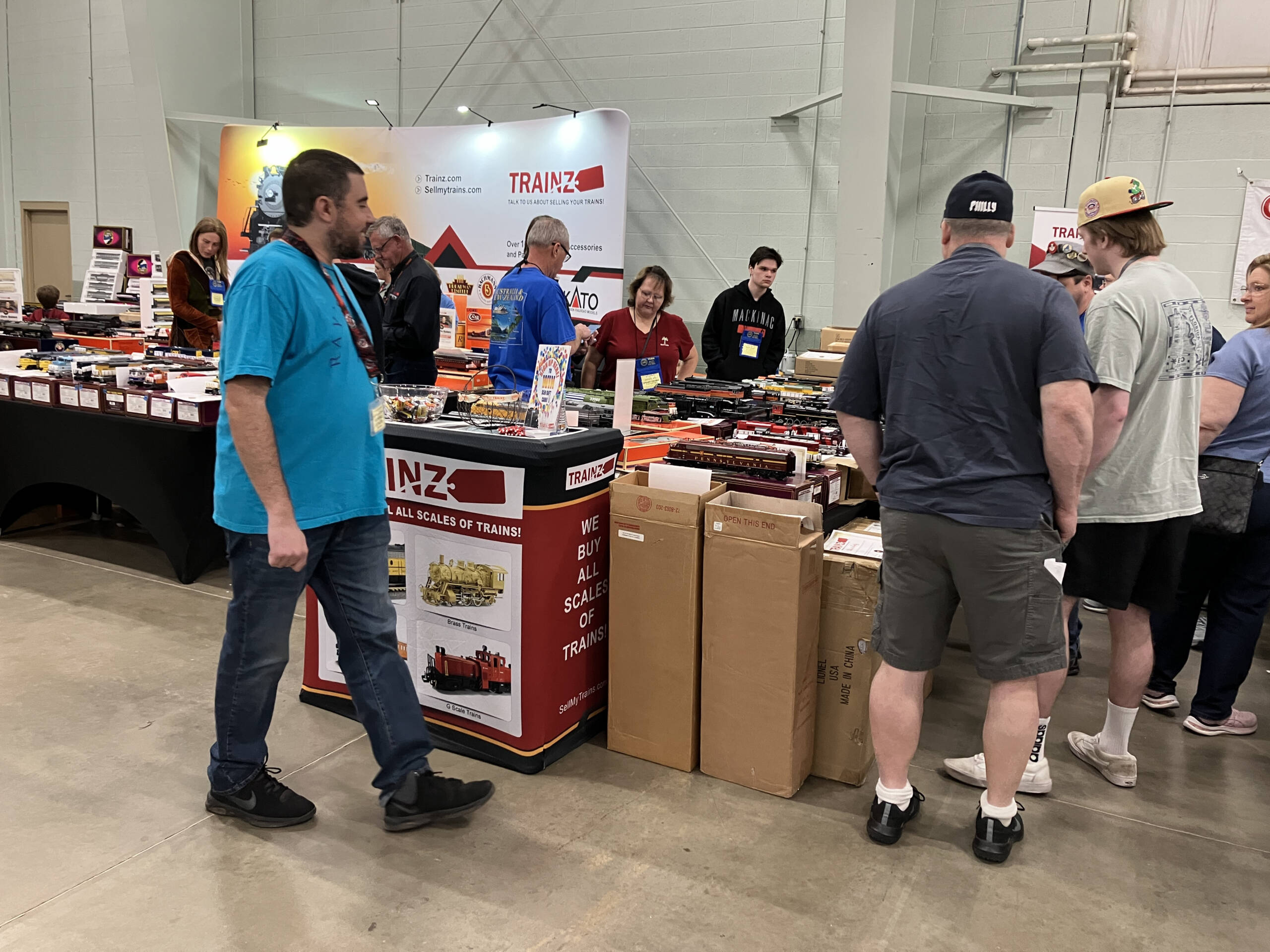
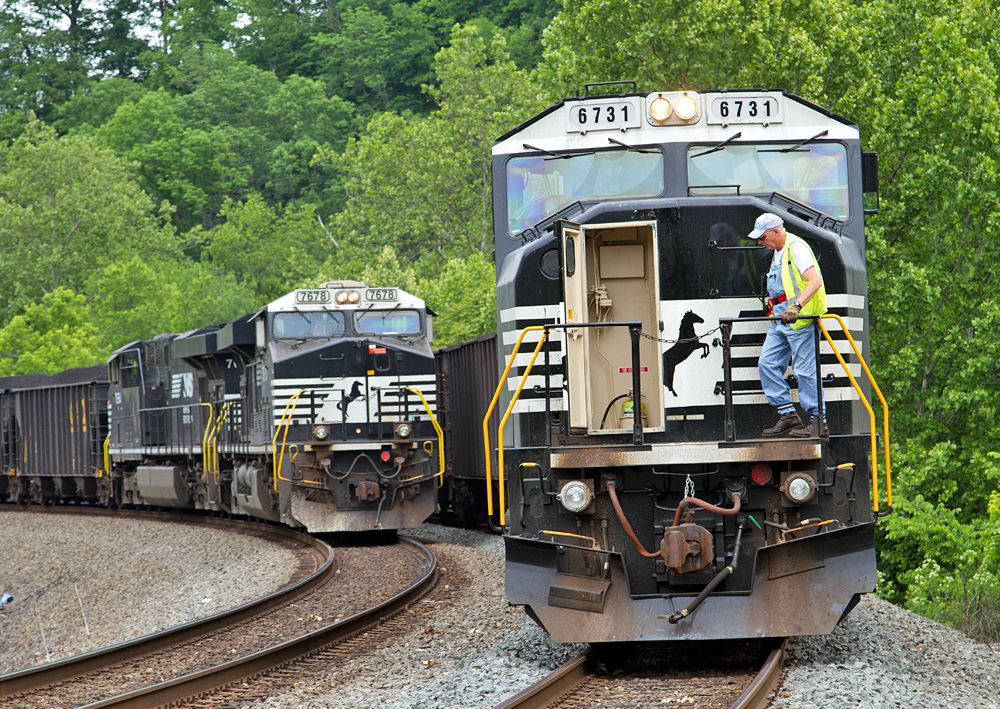
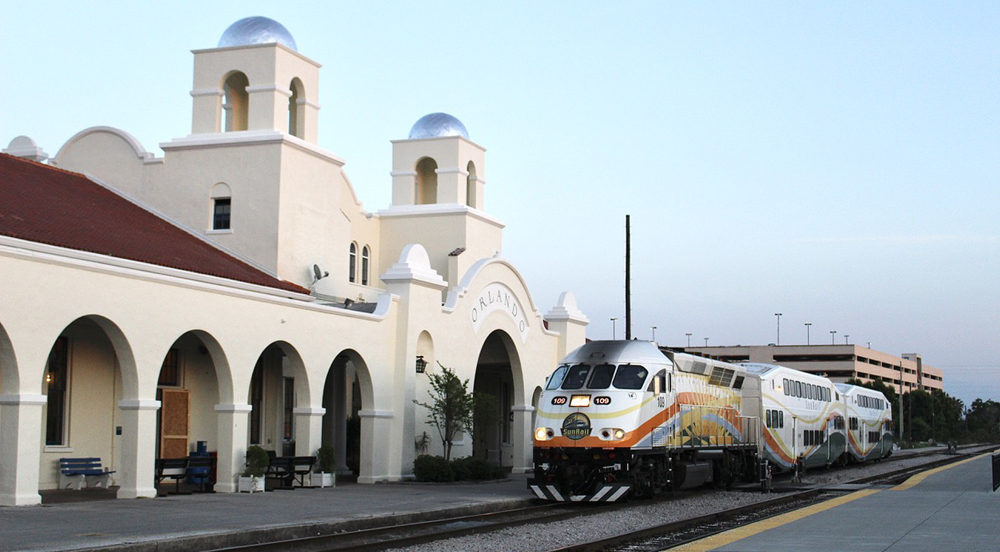




I see the last Downeaster of the night up to Maine come through West Medford MA virtually empty. I once or twice have driven up to Anderson/Woburn to watch on the platform how many people are on; not very many. Outside of a shopping trip to Freeport why go? Having heard there were rail/bus ride options with tickets honored on both I wonder if some of the counted rail passengers took the bus instead? The Boston bus station is right beside South Station–no annoying connections to North Station. A late friend said the bus companies wanted the service to funnel their passengers into the Corridor. In short, a pipe dream, like a Boston-Albany set-out sleeper on the Lake Shore. I’d give that business once or twice a year; then rent a car out of Albany to go to the Glimmerglass region.
J.P.:
To your statement “But, having said that, I’ve got NOTHING against getting government loot showered on railroad boondoggles. The military, highways, airports, waterways, and the burgeoning police/security state are all wonderful boondoggles which have been going on for decades and decades. The railroads should be in on this boondoggle too.
Remember, the government doesn’t spend money. It give the money to other to spend. The government is just a conduit for loot and graft. Until the railroads are in of the looting and graft we’ll never have good passenger trains.”
I’m with you completely! Nor do I feel bad for their strategy of staying clear of Federal funds where-ever possible. In-fact, I applaud their doing their best to avoid the loot – due to the strings that always seem to be attached (e.g. PTC, etc.).
Mr. Oltman, nowhere near a good comparison. The River Line runs through a populated area in its entirety ending across the river from a city of well over a million people with direct transit connections to a resort area at the coast. On the north end there are direct connections to the rest of the NE Corridor including NYC and further up, Boston. Portland barely has 65,000 people and Lewiston has less than 40,000 with another 25,000 in neighboring Auburn. In between there are very few. This will never support the train service. Maine may be called “Vacation Land” by some but don’t expect to enjoy it without a car.
Mr. Hastings has it correct. Patricia Quinn has come up with an idea to extend her job. There is no need for any further train service in the state of Maine but in order to keep her job and those that are part of her empire she needed to come up with something. People should look at the failure of the Brunswick extension and question every scheme she comes up with.
Camden (NJ) to Trenton probably is a good analog for Portland to Lewiston. NJT’s Riverline runs over 40 trains a day between the two points, so maybe Maine’s looking in the right direction. The line runs DMU light rail vehicles during the day, freight runs at night.
https://www.njtransit.com/pdf/bus/T0343.pdf
If the NNEPRA does have a full-time staff of 8 (counting Ms. Quinn) that does sound like a government agency that could be looking for new missions to justify their current staffing level now that the Downeaster is established. I had to negotiate with many similar ones over the years in my job. They usually were dragging things out to create work for themselves and very frustrating to work with.
Its been 8 years since I drove Portland to Lewiston/Auburn area which I’m guessing was around 60,000 or so back then. I doubt that area has grown that quickly to support anywhere near 15 round trips a day, especially if they are only one car or 2 cars in length. Historically, short passenger trains rarely come near breaking even for just their operating costs.
Well this blows my idea out of the water:
Narrow Gauge Railroad staying in Portland
The nonprofit considered moving to Gray after the Portland Co. was sold for
redevelopment, but it now plans to remain on the Portland waterfront, where it
has operated since 1993.
“To continue either to Brunswick or Boston, trains must make a reverse move to get back to the mainline.” Actually, since the trains are operated with an engine on each end, the Boston- bound trains back into the Portland station and then head for Boston. At least, that was the practice on a trip to Brunswick and back that I took this past spring.
Adding a station on the mainline, in downtown Portland, would help increase usage whether or not they add train service to any additional towns. Based on 5 minutes looking at Google Earth, how about putting a station building in the triangle of land east of the main line, just North of where the 2 tracks merge to one? The boarding platform could extend a little to the south of the station building (behind/West of the McDonalds). The other railroad track which extends out NNE appears to be unused and disconnected from the main line, and could be removed, to help make room for a station building.
It’s a crazy dream perhaps, but if I had a magic wand I would tie all these ideas together and bring the Westbrook service down Commercial Street (in a median – was street running years ago) to a new station in the Old Port near the ferry terminal. Then bring both Downeasters (Brunswick and Lewiston-Auburn) down the SLR, over the Back Cove and into the same downtown station.
I know this is probably an expensive option, but it would be the best solution to tie this all together before it is too late. Ask Boston about the costs and challenges of trying to connect two separate train stations.
The “third alternative” listed above is the old CNR Grand Trunk Railway which went into the India Street Station on the waterfront. The “Mountain Branch”, on which the Portland Transp. Center is located, is the old Maine Central line to North Conway, Crawford Notch and St.Johnsbury VT.
I live in the core of this area and I have to say one thing Ms. Quinn seems to lack, or at the very least skew, is data. I’ve seen the numbers for the Downeaster, which I do champion for its core mission of connecting Portland and Boston, but what she sees now is a quasi-commuter program without any base. The DE numbers will point to strong ridership in NH, and even the Woburn stop inbound to Boston. Portland delivers, so does Wells, but beyond that Maine supports mild tourist excursions. Quinn and co would be hard pressed to build upon the existing network, or trying to connect Maine to NYC (thats a suggestion, it would need to be followed up with actual figure to prove demand), but I really have to question this DMU thing. Considering since I drive Yarmouth to Auburn with low to moderate traffic, I see no ‘alternative’ need right now. The existing bus service is subsidized, since it really struggles to make a go east of Portland. And what is the FRA Safety rating of the DMUs on a freight rail network? My understanding is outside of light rail or closed loop systems, their crash worthy-ness doesn’t really meet the current FRA requirements to not ensure massive casualties on a rural/interurban type line. My point here is, Quinn, you’ve done great to get the DE going, but time to give up this ‘expansionism’ fantasy and let others work on the just letting the damn train go as it is.
Those 30 trains daily might be a twin-unit DMU… making it more like a light-rail transit operation opposed to five coaches hauled by a heavy diesel.
Re: Mr Landey does the 46 trains from San Jose to San Francisco, that CalTrains runs, count? That just northbound. Or the corridor New York to Washington D.C. where Amtrak runs 40 or 50 a day in each direction?
San Jose, San Francisco are quite a bit bigger than Portland ME, and (well) NY and DC are off the scale for both.
If CalTrains only run 46 trains a day, it seems unlikely that that 30 between Portland and Boston would be needed.
But, having said that, I’ve got NOTHING against getting government loot showered on railroad boondoggles. The military, highways, airports, waterways, and the burgeoning police/security state are all wonderful boondoggles which have been going on for decades and decades. The railroads should be in on this boondoggle too.
Remember, the government doesn’t spend money. It give the money to other to spend. The government is just a conduit for loot and graft. Until the railroads are in of the looting and graft we’ll never have good passenger trains.
JIM – You’re maybe a little greedy. In fact you are mega-greedy. The north-south connection you want would cost more money than was paid to build Switzerland. Yeah, this connection would be a great thing, with benefit commensurate with about a tenth a percent of what it would cost. Boston has transit needs that are much more important for far more riders that could be effectuated at far less the budget.
Here’s a suggestion: Come into North Station. Ride the Orange Line to Back Bay Station. Then, VOILA – you’re at the south side. Problem solved for most south side corridors (Providence trains, Franklin trains, Needham trains) and for the Framingham – Worcester line as well. Sorry won’t work for the Old Colony routes (which don’t call at Back Bay) but that’s just life. Public transportation doesn’t cover every possible route.
You want seamless transportation in New England? Sorry there is no such thing. For a very substantial cost rail can cover some routes. The incremental cost of adding to that number of routes – still way short of “seamless” – is staggering.
Mr Landey does the 46 trains from San Jose to San Francisco, that CalTrains runs, count? That just northbound. Or the corridor New York to Washington D.C. where Amtrak runs 40 or 50 a day in each direction?
I maybe a little greedy, but I’d like to see a North/South connection to make traveling even more seamless in New England.
Mr. James Hall and Mr. Robert McGuire have agreed to disagree. As I haven’t been in Portland the past 52 years I can’t say if the Maine Turnpike is crowded (as James says) or empty (as Robert claims). Mr. Hall says, “If you build it they will come”. Mr. McGuire says Maine did build the Brunswick extension and the trains run empty.
I will say this: Even larges cities don’t support thirty trains a day on one route. I’m glad that Portland is prosperous and that Portland is growing (per the blog above). This rail proposal is sheer fantasy. It’s time for some adults to come into the room and propose something realistic.
There seems to be increasing, widespread, localized interest in passenger rail (both light and heavy) throughout North America. The general scheme seems to be to use Amtrak as a backbone, and to have local service which ties into it somehow.
I see nothing to complain about.
The above comments are general in nature and do not form the basis for an attorney/client relationship. They do not constitute legal advice. I am not your attorney. In the next world you’re on your own.
I stopped reading whern I got to the thirty passenger trains a day. A metro area the size of Portland couldn’t support that.
Once again the negative Nancys are out in force.
People are trying to see how they can affect traffic congestion and move people more efficiently around the area. That’s Ms. Quinn’s job. And that’s a problem? This kind of rail service exists all over Europe, even in small cities, but Americans are so wedded to their cars, even rail fans think “that’s a dumb idea.” How do you know it’s a dumb idea unless you study it to see what makes sense?
Building roads to fix traffic problems never words. It’s a case of traffic filling the available space. Look at Houston. Or LA. This is called “induced demand.”
https://usa.streetsblog.org/2017/06/21/the-science-is-clear-more-highways-equals-more-traffic-why-are-dots-still-ignoring-it/
Robert and a couple of others… if you build it, they will come. Maine should be congratulated for forward thinking — perhaps inspired by the total catastrophe catch up ball game that Massachusetts and Connecticut are playing.
As to the widening of the Maine Turnpike… from Falmouth up to Scarborough… it won’t take care of the traffic. Sorry.
This is all so incredibly stupid. The only bit of this this that might be even marginally useful is the Boston-Portland section of the Downeaster. Most of this 540,000 passenger ridership comes from Boston area commuters that commute between North Station and Exeter, Durham and Dover, NH. They ride the train almost every day in both direction bumping up the passenger counts. It would be better operated by the MBTA. The majority of the remainder come from sports fans going to whatever the old Boston Garden is called these days on game days. You would think that Patricia Quinn, her apologist Wayne Davis of NNEPRA and the remaining 7 members of the bloated staff would have seen the failed result of the Brunswick extension that carries about 100 passengers a day spread between 5 round-trips and thought about the millions and millions of dollars spent on the extension and realized that there is little to no market for additional passenger train service in Maine. You can drive from Lewiston to Portland almost any time and hardly see any cars until you get to West Falmouth and with the widening of the Maine Turnpike from there to Scarborough that will take care of them. The few who use public transportation now have new service via Concord Coach which provides frequent, reliable service now between Portland and Boston. And lesser service as far north as Bangor. No need for trains as the buses aren’t full until they leave Portland. At least the bus service is cleaner, and much faster than the Downeaster.
I guess this all makes sense to Ms. Quinn because it gives her and her staff something to do and of course protects their taxpayer supported jobs.
I know this is an outlandish thought, what about building dual cab pass locos?